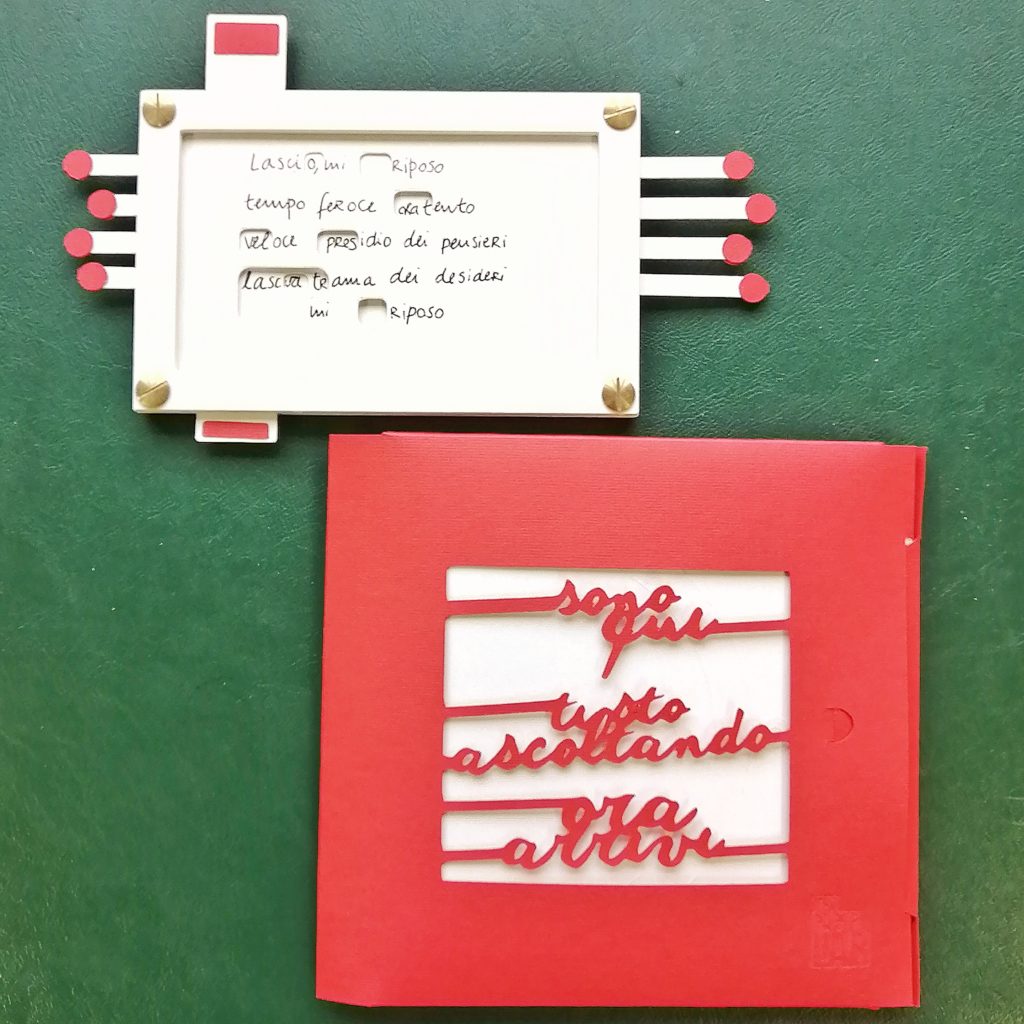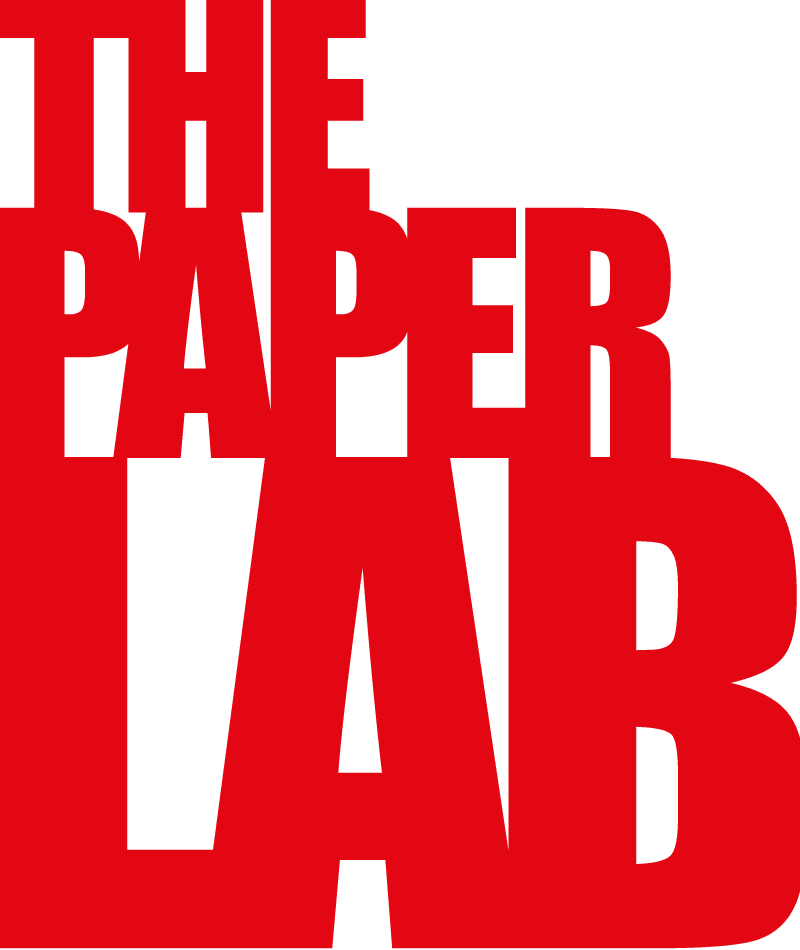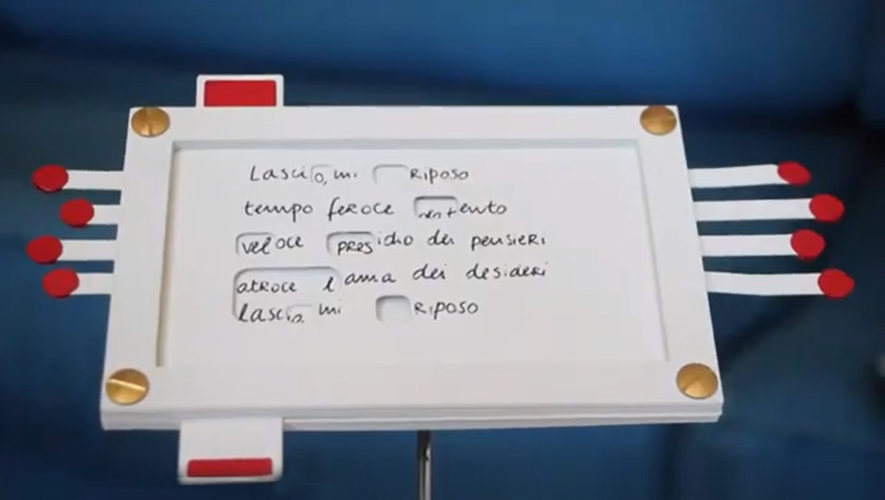Continua il discorso tra Daniela Calisi, autrice di Change e Rachele Cataldo, esperta di data visualization con cui condivide l’amore per l’interactive art.
Nella scrittura secondo me c’entra moltissimo la questione di sperimentare il vero rapporto che può esserci tra uomo e macchina perché in teoria la tecnologizzazione della scrittura ha come obiettivo ultimo la leggibilità. Non si scrive a mano così si garantisce la leggibilità a tutti. Nel tuo caso invece anche nel rendere leggibile il testo hai voluto aggiungere il tocco umano, hai voluto inglobare l’uomo nella macchina stessa.
Sì, nell’ultima versione in cui ho usato la macchina CNC e sono riuscita a far scrivere la mia grafia in tutto e per tutto non ho più sentito il bisogno di fare un’altra stratificazione artigianale, se non quella del montaggio. Quest’ultima però non la reputo essenziale: se fossi in grado di creare un robottino che mi monta le cose non mi darebbe fastidio.
A posteriori ritrovo dei ragionamenti interessanti. Ad esempio, ritornando alla stratificazione e alla freddezza che io sentivo, è proprio perché avevo e ho l’impressione che la macchina si perda dei pezzi; per poterti interfacciare con essa, tu sei costretto a lasciare qualcosa indietro.
In quel caso, la macchina non era in grado di creare certe nuvolosità dello sfondo, certi aspetti pittorici che avevano le mie opere precedenti. Per cui anche se non faccio raffigurazioni di niente, questo passare a mano lo sfondo incerato piuttosto che passare la tempera sopra il legno, mi permetteva di dare dei tocchi, delle profondità alla materia che la macchina, ovviamente, non prevedeva.
Quindi è una questione di complessità della testura. A un certo punto il fatto di essere soddisfatta della scrittura, della grafia, ha fatto sì che si riversasse tutto all’indentro.
Sembra che l’abbia scritta io, che fisicamente l’abbia vergata su ogni singolo oggetto: questo mi dà la soddisfazione di cui ho bisogno per sentirla come un’opera mia, e non un oggetto industriale da cui mi sono dovuta staccare; il mio non è un processo di design in senso classico, è un processo di elaborazione artistica.
Non sento il bisogno di creare un progetto di design del quale poi mi libero quando entra in produzione.
C’è un ragionamento sul rapporto tra creatività umana e produzione industriale: io mi avvicino ad una produzione industriale, ma in qualche modo cerco ancora di dettare le mie regole. Per esempio possedendo la macchina. Ecco, questo è molto importante, è un concetto fondamentale per me: io non vado in tipografia con il mio progetto a farmi produrre le cose, non esiste per me questa cosa.
Nella mia sperimentazione la proprietà delle macchine ha un aspetto anche politico o comunque sociale. È l’assicurarmi un “posto” nel rapporto con la macchina, con l’industrializzazione, nel rapporto con la commercializzazione. Nel mercato si creano relazioni tra la persona tra produttore e acquirente molto diverse da quelle tra me e la mia macchina, anche per il fatto che sono io, in prima persona, la produttrice delle mie opere.
On continue le discours entre Daniela Calisi, autrice de Change, et Rachele Cataldo, experte de data visualization avec laquelle elle partage l’amour pour l’interactive art.

Vérsion Française
LA GALAXIE EVENTAIL VOL. 8 : gouverner la machine
Dans l’écriture, selon moi, c’est important la question d’expérimenter le vrai rapport qu’il y a entre l’homme et la machine, parce que l’écriture technologique a comme objectif la lisibilité. On n’écrit pas à la main car on garantie la lisibilité de tous. Dans votre cas, au contraire, même pour rendre lisible le texte, vous avez voulu adjoindre la touche humaine, en englobant l’homme dans la machine même.
Oui, dans la dernière version dont j’ai utilisé la machine CNC et je suis réussi à écrire avec ma graphie entièrement, je n’ai plu senti le besoin de faire une autre stratification artisanale, sinon cela du montage. Mais ce ça, pour moi, ce n’est pas importante : si je pouvais créer un petit robot qui me construit les choses, je serais contente.
Rétrospectivement, je retrouve des raisonnements intéressants. Par exemple, en revenant à la stratification et à la froideur que je ressentais, c’est justement parce que j’avais et j’ai l’impression que la machine se perd des pièces ; pour t’interfacer avec elle, tu es obligé de laisser quelque chose en arrière.
Dans ce cas, la machine ne pouvait pas de créer certains nuages de fond, certains aspects picturaux qui avaient mes œuvres précédentes. Donc même si je ne fais pas de rien, ce passage à la main du fond ciré plutôt que de passer la détrempe au-dessus du bois, me permettait de donner des touches, des profondeurs à la matière que la machine, évidemment, ne prévoyait pas.
Donc, c’est une question de complexité textuelle. À un certain moment, le fait d’être satisfaite de l’écriture et de la graphie, a fait que tout se déversait à l’envers.
Il semble que je l’ai écrite moi-même, que je l’ai marquée physiquement sur chaque objet : cela me donne la satisfaction dont j’ai besoin pour la sentir comme mon œuvre, et non pas un objet industriel dont j’ai dû me détacher; le mien n’est pas un processus de design au sens classique, c’est un processus d’élaboration artistique.
Je ne ressens pas le besoin de créer un projet de design dont je me libère quand il entre en production.
Il y a un raisonnement sur le rapport entra créativité humaine et production industrielle : je m’approche à une production industrielle, mais dans certaines façons je cherche de fixer mes règles. Par exemple, en possédant la machine. Ça, c’est un concept fondamental pour moi : je ne vais pas en typographie avec mon projet pour me faire produire les choses. Dans mon expérimentation, la propriété des machines a un aspect politique et aussi bien social. C’est de m’assurer une “place” dans la relation avec la machine, avec l’industrialisation, dans la relation avec la commercialisation. Sur le marché, il y a des relations très différentes entre la personne, producteur et l’acheteur différents respects ces entre moi et ma machine, parce que je suis, à la première personne, la productrice de mes œuvres.
English version.
THE FAN GALAXY VOL.8: Governing the machine
In my opinion, writing has a lot to do with the question of experimenting with the true relationship that can exist between man and machine, because theorically the technologisation of writing and has legibility as its ultimate objective. You don’t write by hand so you can guarantee readability for everyone. In your case, however, even in making the text readable, you wanted to add a human touch, you wanted to incorporate the human being into the machine itself.
Yes, in the last version in which I used the CNC machine and succeeded in having my handwriting written in all its entirety, I no longer felt the need to do any other artisanal layering, except for editing. But I don’t consider this to be essential: if I could be able to build a little robot that assembled things for me, I wouldn’t mind.
In retrospect I find some interesting reasoning. For example, going back to the stratification and coldness that I felt, it is precisely because I had and have the impression that the machine loses pieces; in order to interface with it, you are forced to leave something behind.
In that case, the machine was not able to create certain cloudiness in the background, certain pictorial aspects that my previous works had. So even though I don’t depict anything, hand-painting the waxed background rather than applying tempera to the wood allowed me to give touches and depths to the material that the machine obviously didn’t provide.
So it’s a question of the complexity of the texture. At a certain point, the fact that I was satisfied with the writing, with the handwriting, meant that everything poured in.
It seems as if I wrote it, that I physically wrote it on every single object: this gives me the satisfaction I need to feel that it’s my own work, and not an industrial object from which I had to detach myself; mine is not a design process in the classical sense, it is a process of artistic elaboration.
I don’t feel the need to create a design project that I then get rid of when it goes into production.
There is a reasoning about the relationship between human creativity and industrial production: I approach industrial production, but somehow I still try to dictate my own rules. For example, by owning the machine. This is very important, it is a fundamental concept for me: I don’t go to the printing house with my project to have things produced, this doesn’t exist for me.
In my experimentation, the ownership of machines also has a political or social aspect. It is the assurance of a “place” in the relationship with the machine, with industrialisation, in the relationship with commercialisation. In the market, relations are created between the person, the producer and the buyer, which are very different from those between me and my machine, not least because I am the first person to produce my works.
Intervista di Rachele Cataldo
Estrapolazione di Claudia Virzì
Traduzione francese di Federica D’Amico
Traduzione inglese di Maria Graziana Ronchi
Editing di Alessandra Richetto
Vol. 1 – Vol. 2 – Vol. 3 – Vol. 4 – Vol. 5 – Vol. 6 – Vol. 7 – Vol. 9 – Vol. 10 – Vol. 11
Vérsion Française ci-dessous.
English version below.

